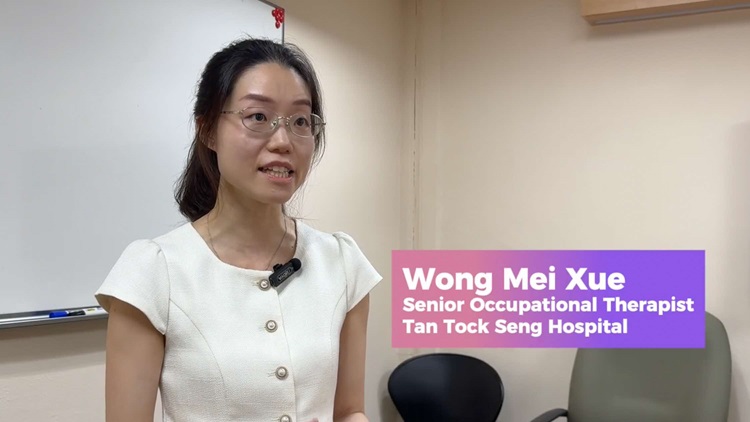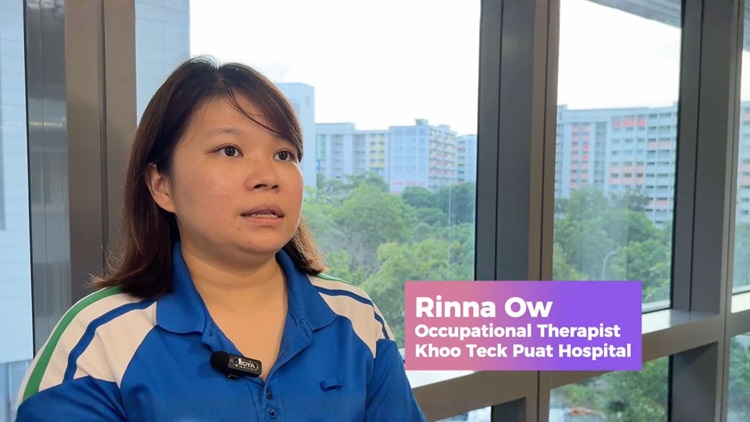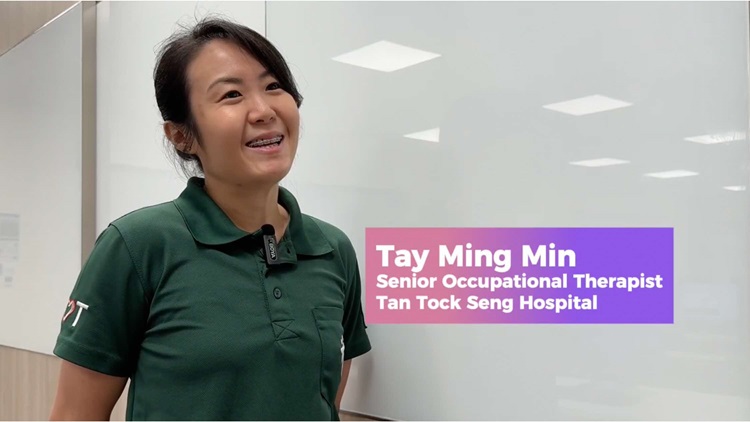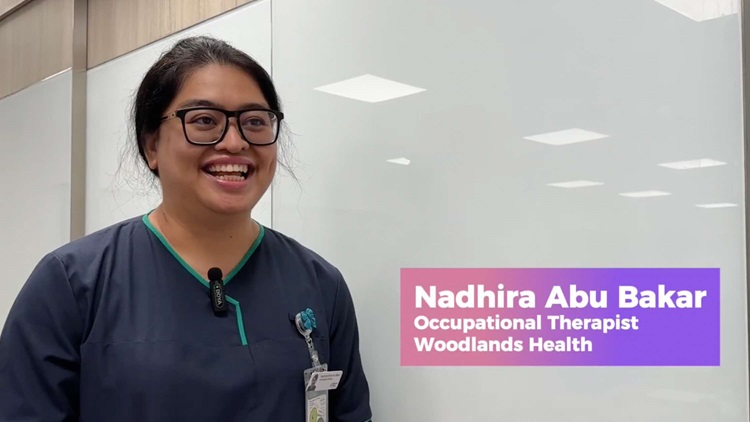Synapxe, Singapore’s national HealthTech agency, has closely collaborated with our public healthcare partners from NHG Health to encourage occupational therapists (OTs) in Singapore to explore the potential of Generative AI (GenAI) through Tandem - a safe and secure platform built with the needs of public healthcare in mind.
For three days across April to May 25, over 80 healthcare professionals came together for interactive and engaging workshops as part of NHG Occupational Therapy Day 2025. Facilitated by Synapxe’s Data Analytics & AI team, the workshops were conducted at Yishun Community Hospital (YCH) and Khoo Teck Puat Hospital (KTPH), Woodlands Health (WH), and the Institute of Mental Health (IMH).

This article explores the key features of the Tandem platform, the experience of the workshop participants and the broader vision of enabling more Public Healthcare Institutions (PHIs) to adopt GenAI in their daily work. Hear from the occupational therapists on what they have learnt.

What is Tandem?
Tandem is a GenAI platform developed by Synapxe to support Singapore’s public healthcare ecosystem. It is a safe and secure platform that enables all public healthcare users to test, experiment and deploy different GenAI applications to enhance their workflow and maximise productivity.
Alvin Yuen, a Senior Specialist from DNA who helped develop Tandem and was a facilitator in the workshop, explained:
"Tandem is unique from other GenAI tools available, especially in healthcare, due to the level of security that healthcare professionals can rely on when circulating, managing and working with internal documents. Moreover, Tandem provides healthcare professionals with a pathway to scale ideas after they have been tested and validated through the platform. From there, they can safely share their validated use-cases across teams and healthcare institutions.”
Beyond helping to alleviate the workload of healthcare professionals in Singapore, Synapxe’s Tandem facilitates collaboration across PHIs by offering shared access to GenAI tools. Find out more about Tandem and its applications here.
Synapxe x NHG Health Tandem Workshops
In a joint effort with NHG Health, Synapxe hosted a series of workshops across three public healthcare institutions, aiming to onboard OTs and other healthcare staff onto the Tandem platform.

Senior Occupational Therapist from Tan Tock Seng Hospital (TTSH), Wong Mei Xue, shared that engaging Synapxe for the workshop aligned with NHG Health’s vision to “evolve, empower and engage” OTs. She added,
“We recognise the rapid advancement of AI as well as its potential to be used in our day-to-day work. We hope that the workshop can enhance the capabilities of our therapists and support staff to embrace the power of AI with Tandem.”
Each session began with a foundational introduction to GenAI, which allowed OTs to learn about how Tandem works, followed by key concepts like prompt engineering and strategies to achieve accurate and relevant outputs.
This segment was especially valuable for those who were unfamiliar with using AI, helping them build a clearer understanding of the technology and how it can be applied meaningfully in a healthcare setting.
Following the briefing, the participants were given an immersive hands-on experience with Tandem. Guided by Synapxe facilitators, they explored the various GenAI applications including Document Companion and Tandem Discovery. They were also encouraged to experiment with prompts relevant to their work.

How Tandem Supports Occupational Therapy
Research has shown that GenAI holds significant promise in the field of occupational therapy, where documentation and care-planning are both time-intensive and client-specific. Tandem can automate routine tasks such as generating notes, report writing, summarising medical records and create personalised treatment plans, allowing OTs to spend more time engaging directly with patients.
Senior OT from TTSH, Mei Xue, further elaborated on how OTs like her can leverage the “tremendous potential” of GenAI in their work.
“GenAI tools like Tandem can support us with administrative tasks like organising and analysing data. Furthermore, it can help facilitate learning activities which are often organised by OTs. With Tandem, we can save more time on such tasks and dedicate more time to patient care.”
To better understand the impact of these workshops, we spoke with occupational therapists from various hospitals who attended the workshops at IMH, WH, YCH and KTPH. Here is what they had to say about their experience with Tandem and their key takeaways.
Tandem’s Document Companion: Improving Work Efficiency
In many healthcare settings, professionals face the challenge of managing large volumes of complex information, which can be time-consuming and overwhelming. Tandem’s Document Companion tool is designed to enhance work efficiency by enabling users to quickly extract and summarise key information from lengthy documents. By providing concise summaries and faster access to important content, Document Companion helps streamline workflows and improve productivity for healthcare professionals.

Senior Occupational Therapist at KTPH, Yep Sin Yee, noted that,
“The Document Companion feature in Tandem can help summarise uploaded documents, allowing me to save time reading the information. The summarised information can also help me in creating presentations.”
In addition to generating summaries which have helped in understanding patient diagnosis, another OT from KTPH, Rinna Ow outlined the usefulness of Tandem’s translation feature,

“Tandem can help translate my emails and information documents, for example, about fall-prevention, into different languages, including Burmese. This has great potential in the conveyance of information to the domestic helpers who are often the primary caregivers of our patients.”



